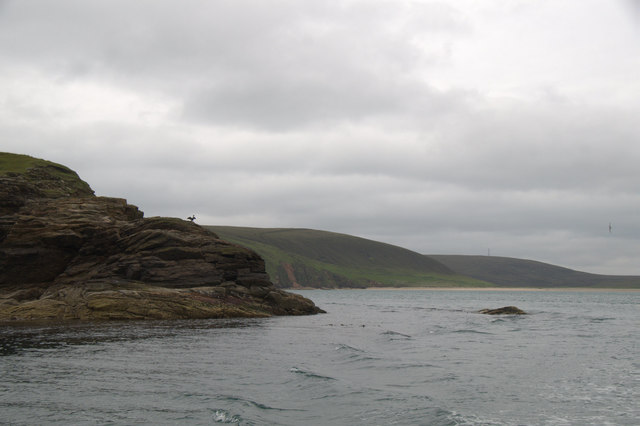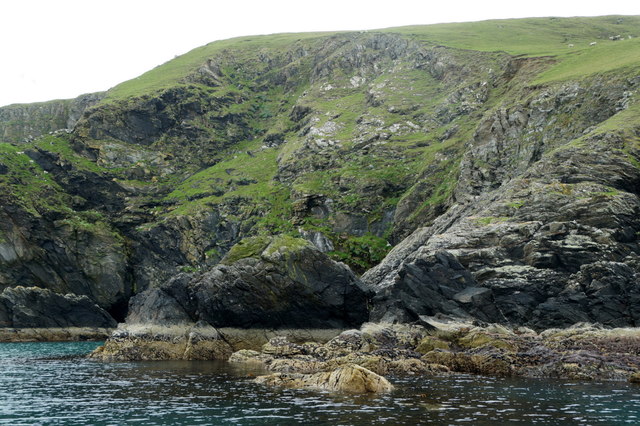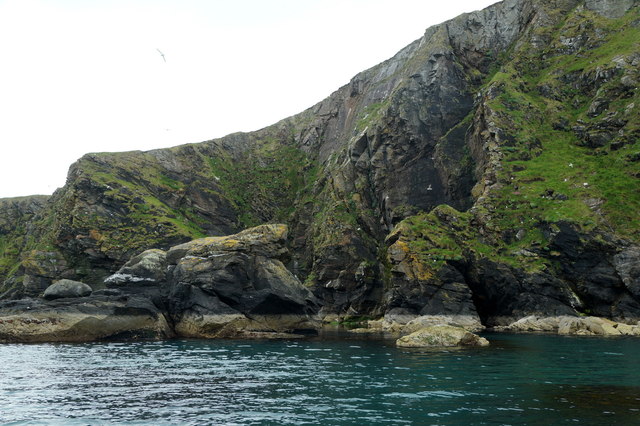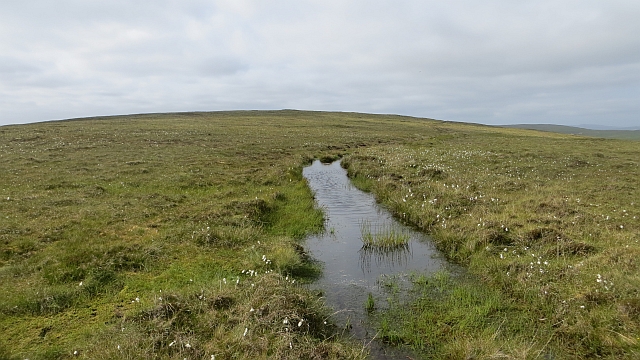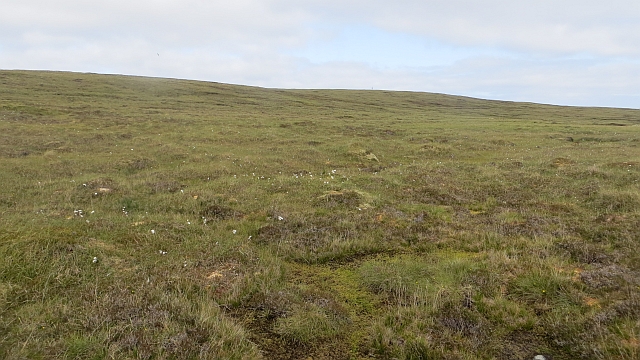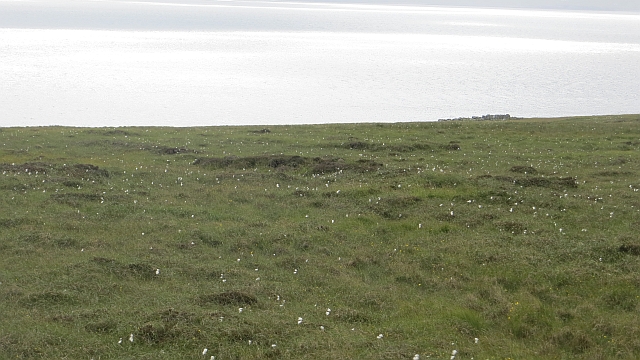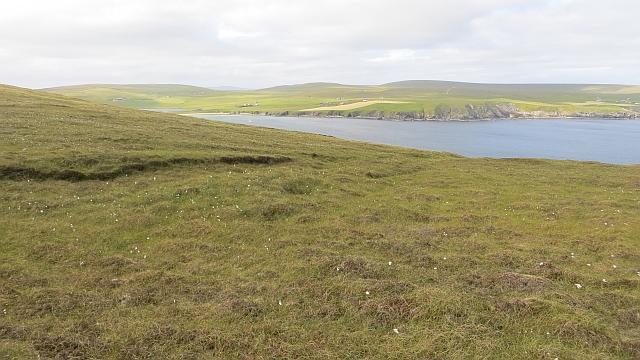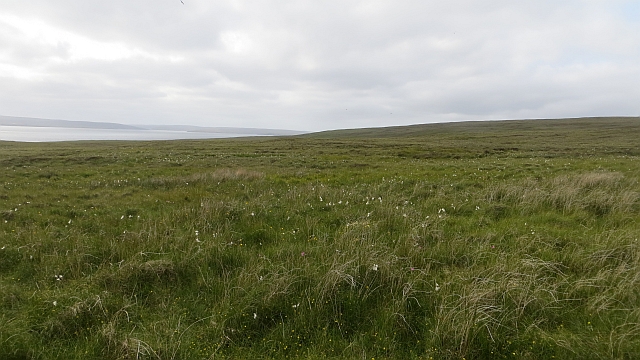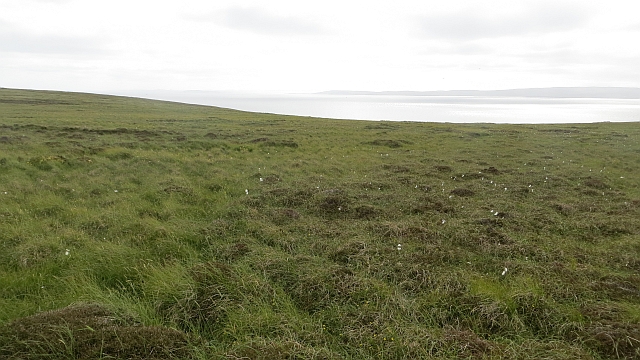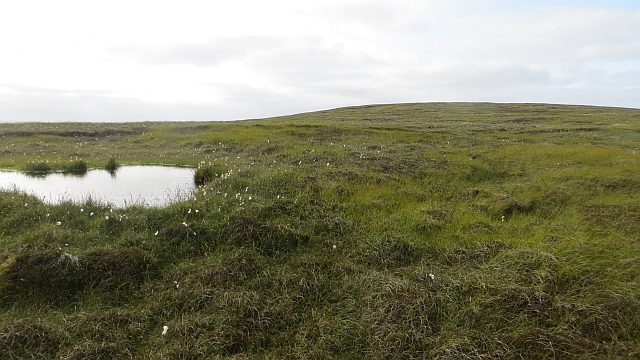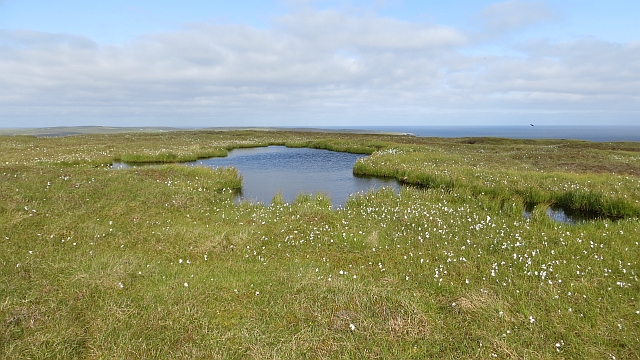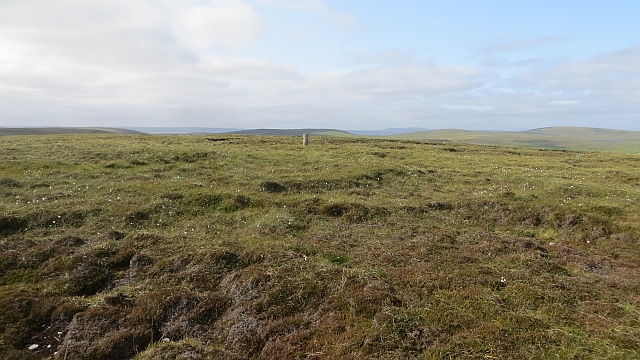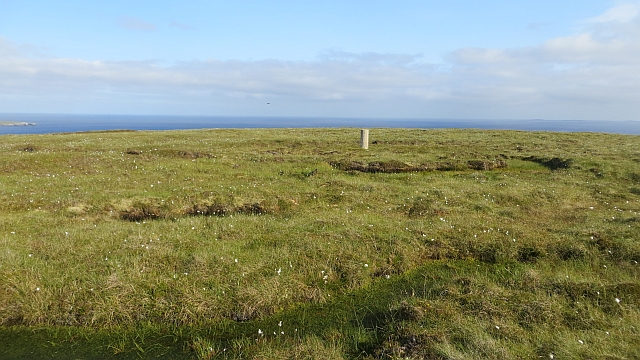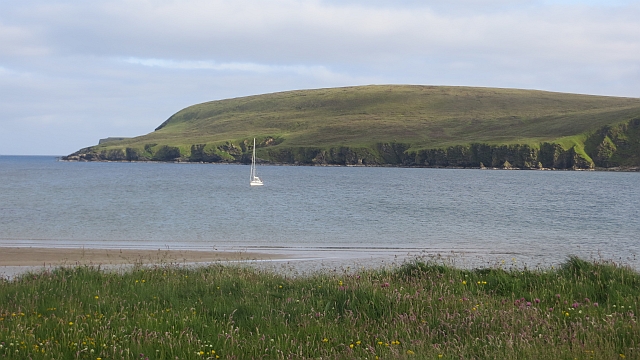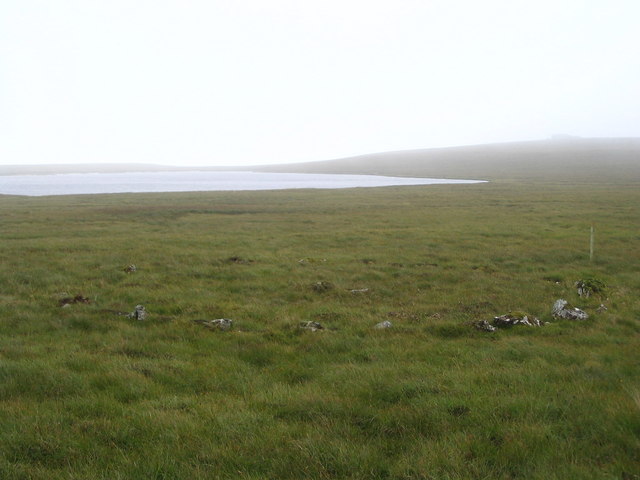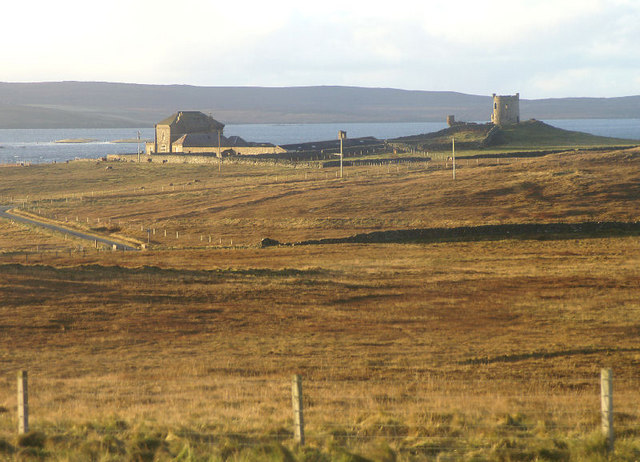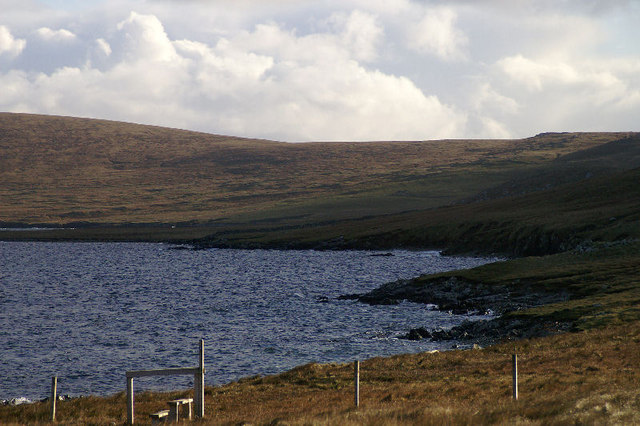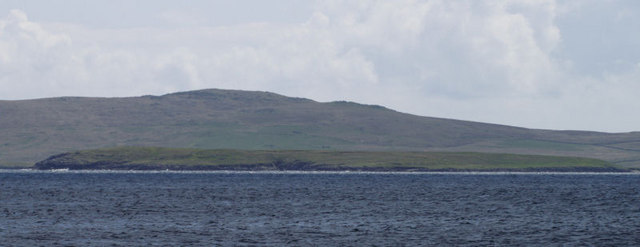Red Geo
Coastal Feature, Headland, Point in Shetland
Scotland
Red Geo
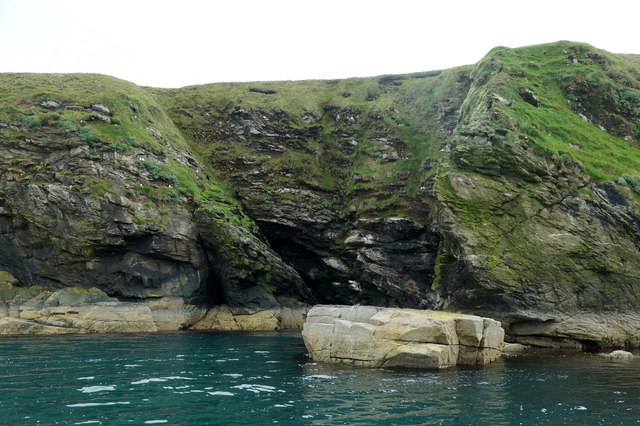
Red Geo is a prominent coastal feature located in the Shetland Islands, Scotland. It is classified as a headland and point due to its distinct geographical characteristics. Situated on the east coast of Mainland, the largest island in the Shetland archipelago, Red Geo is renowned for its stunning natural beauty and unique geological formations.
The headland is characterized by its towering cliffs that rise up to 100 meters above sea level, offering breathtaking views of the surrounding coastline and the North Sea. The cliffs are composed of red sandstone, which gives Red Geo its name and adds to its striking appearance. The sandstone has been shaped by millions of years of erosion, resulting in rugged, jagged formations and deep crevices that are a haven for various seabirds.
Red Geo is also home to a diverse range of flora and fauna. The coastal grasslands provide a habitat for a multitude of plant species, including wildflowers, mosses, and lichens. The area is a designated Site of Special Scientific Interest (SSSI), highlighting its ecological importance and conservation value.
The headland is easily accessible to visitors, with a walking trail that leads to a viewpoint overlooking the cliffs. The trail offers an opportunity to observe the abundant birdlife, including puffins, fulmars, and kittiwakes, which nest in the cliffs during the breeding season.
Overall, Red Geo is a captivating coastal feature that combines dramatic cliffs, vibrant flora, and diverse wildlife. Its natural beauty and ecological significance make it a must-visit destination for nature enthusiasts and those seeking to explore the unique landscapes of the Shetland Islands.
If you have any feedback on the listing, please let us know in the comments section below.
Red Geo Images
Images are sourced within 2km of 60.585946/-0.89555611 or Grid Reference HU6089. Thanks to Geograph Open Source API. All images are credited.
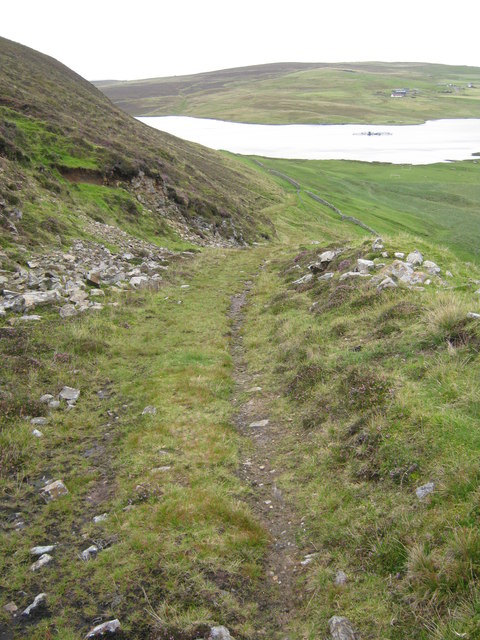
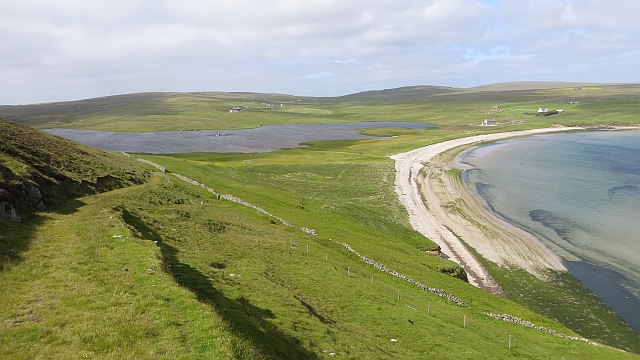
Red Geo is located at Grid Ref: HU6089 (Lat: 60.585946, Lng: -0.89555611)
Unitary Authority: Shetland Islands
Police Authority: Highlands and Islands
What 3 Words
///scope.diverts.accordion. Near Houbie, Shetland Islands
Nearby Locations
Related Wikis
Fetlar
Fetlar (Scots: Fetlar) is one of the North Isles of Shetland, Scotland, with a usually resident population of 61 at the time of the 2011 census. Its main...
Haltadans
Haltadans, also known as Fairy Ring or Haltadans stone circle, is a stone circle on the island of Fetlar in Shetland, Scotland. This site is a ring of...
Brough Lodge
Brough Lodge is a 19th-century Gothic mansion on Fetlar, one of the Shetland Islands, in northern Scotland. Built by the Nicolson family, who were responsible...
Funzie Girt
Funzie Girt (; Scots: Funyie Girt "Finns' dyke") is an ancient dividing wall that was erected from north to south across the island of Fetlar in Shetland...
Urie Lingey
For other islands with similar names, see Linga (disambiguation) Urie Lingey is one of the Shetland Islands. It is between Fetlar and Unst, and Yell is...
Hamars Ness
Hamars Ness is a headland on the island of Fetlar in Shetland, Scotland. The name is from the Old Norse Hamarsnes meaning "craggy headland". A ro-ro ferry...
Hascosay
Hascosay (Scots: Hascosay; Old Norse "Hafskotsey") is a small island lying between Yell and Fetlar in the Shetland Islands, Scotland. == Geography and... ==
Sound Gruney
For other islands with similar names, see Gruney (disambiguation) Sound Gruney is one of the Shetland islands. It lies about 1.5 kilometres (0.93 mi)...
Have you been to Red Geo?
Leave your review of Red Geo below (or comments, questions and feedback).
